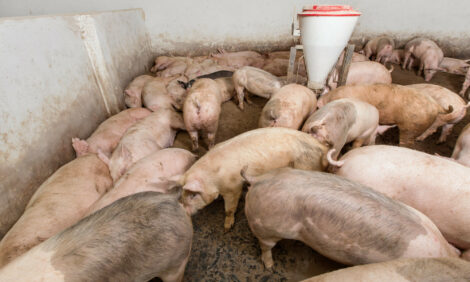



HPAI: Addressing biosecurity on swine farms
Specialists offer advice on how to reduce the risk of pathogen exposure from wildlifeEditor’s note: Webinar content has been edited for length and clarity. To watch the full webinar, please visit https://iastate.app.box.com/s/o6dhclv5irvspcbj5q8p21ujr4a9ei29.
Now that influenza A (HPAI H5N1) has been identified in poultry and dairy cattle, pork producers are looking at what this means for biosecurity on swine farms. Although this situation does not expose new biosecurity hazards, it does change the significance of hazards that need to be addressed. Specialists encourage producers to prioritize and be vigilant with biosecurity protocols to reduce the risk of pathogen exposure from wildlife. At a recent webinar hosted by the Swine Health Information Center and the American Association of Swine Veterinarians, Dr. Derald Holtkamp, Iowa State University, emphasizes biosecurity practices.

“In light of the HPAI/BIAV situation, biosecurity hazards are more significant,” Holtkamp says. “This is a good time to look at our operations. If wild birds or other animals are frequently inside swine barns, that is a high-priority biosecurity hazard.”
Holtkamp stresses the importance of using a standardized outbreak investigation program to conduct a biosecurity hazard analysis. This is a standard way to identify, assess and prioritize biosecurity hazards. Using a comprehensive and consistent approach, terminology and data recording are critical to addressing risks.
A major biosecurity hazard is wild birds and other animals inside barns and other facilities, including:
- Swine barns
- Compost facilities
- Storage sheds
It is important to enclose and bird-proof swine barns. Use bird netting and repair curtains. Also, enclose and bird-proof composting sheds, storage sheds, and walkways between barns. Be sure to control rodents.
Further, wild birds and other animals in the perimeter buffer area of pig farms should be addressed.
Biosecurity hazards include attractants such as:
- Water. This is a good medium for influenza. It can survive for months in cold temperatures.
- Food. Spilled feed poses a hazard. Dead storage and disposal (composting, incineration or rendering) should be addressed.
- Shelter/habitat. Trees, tall grasses, or windbreaks that provide habitats for wild birds should be identified.
Biosecurity control measures include:
- Remove attractants. Clean up spilled feed daily. Eliminate bird nesting and roosting sites. Eliminate wild animal habitat. Use a perimeter fence. Drain ponds.
- Harassment of birds. Lasers and loud noises deter wild birds.
- Lethal control. Careful use of lethal methods may be necessary, including trapping, shooting and poisons.
Specific priority actions producers can take around the farm include:
- Look for and deter nesting and roosting sites, which can be biosecurity hazards, especially near air inlets.
- Conduct audits of ingredient sources, storage and feed mills.
- Be sure to bird-proof and maintain rodent control of ingredient storage and feed mills.
- Avoid contaminated feed sources. Consider any bovine-derived feed ingredients, such as whey, milk replacers, byproducts and raw milk in show pigs.
- Avoid surface water as a source of drinking water, or treat water with chlorination, acidifiers, iodine or peroxide.
- Look at the operation area. Consider nearby poultry and dairy farms.
- Evaluate operational connections, such as third-party service providers for repairs, supply deliveries, etc.
- Keep an eye on migrating birds. Live bird migration maps are available at https://birdcast.info/migration-tools/live-migration-maps/
- Tap resources such as US Wildlife Services.
An online Standardized Outbreak Investigation Program application is available to veterinarians and pork producers. In light of the evolving HPAI situation, this tool gives producers a standardized method to identify, assess and prioritize hazards. Importantly, the program is a comprehensive and consistent approach to investigation, terminology and data recording.
The online application helps producers complete a pre-investigation survey and investigation form, generate and use mapping features, and audit entry events. After the investigation is completed, producers subjectively rate hazards. Then, the program automatically generates a detailed report and an executive report to give producers a snapshot specific to their operations. Access to the online tool may be requested by emailing [email protected].








